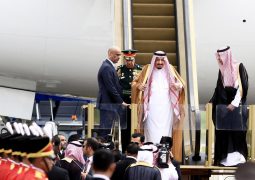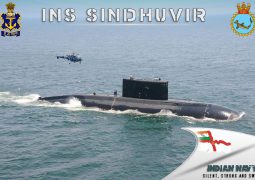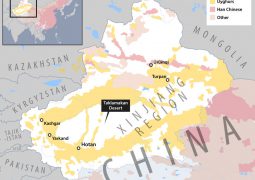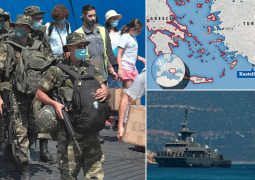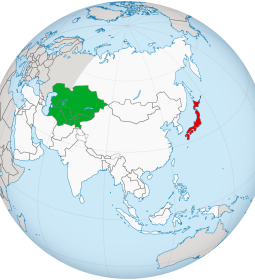Philippines builds its own airfield in Thitu islands in South China Sea

de of the airstrip on the island, known locally as Pag-asa, is among the most critical projects in Manila’s new defence concept
Out in the South China Sea, where waves crash against the shores of contested islands, the Philippines is advancing a military strategy to assert its sovereignty over a region where Beijing’s territorial ambitions grow bolder.
At the centre of this bold strategy is the Comprehensive Archipelagic Defence Concept (CADC), a sweeping initiative aimed at enhancing Manila’s military capabilities and fortifying its maritime borders.
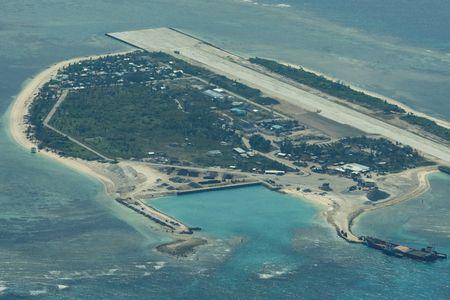
The plan is ambitious, encompassing upgrades to crucial infrastructure and a significant increase in naval and air assets. Among the most critical projects is the expansion of the airstrip on Thitu Island, known locally as Pag-asa. This unassuming land mass, the largest of the Spratly Islands claimed by the Philippines, could soon become a pivotal point in the struggle for maritime control.
Do you have questions about the biggest topics and trends from around the world? Get the answers with SCMP Knowledge, our new platform of curated content with explainers, FAQs, analyses and infographics brought to you by our award-winning team.
“[We] are increasing our concentration, our focus and our emphasis on external features all the way up to our 200 nautical-mile exclusive economic zone,” said Philippine Navy spokesman Rear Admiral Roy Vincent Trinidad on Tuesday.
The CADC’s implementation “is a long-term process which will be done in different phases”, he said. But this is more than just a military upgrade; it is a declaration of intent.
The planned extension of the airstrip on Thitu Island to 1.5km will allow larger aircraft, such as C-130 cargo planes, to land – essential for transporting troops and supplies to the remote outpost. Lawmakers have earmarked around 3.2 billion pesos (US$55.8 million) for the project and the construction of a shelter port on Lawak Island, 158km (98 miles) to the east.
Military chief Romeo Brawner Jnr has ambitious plans to upgrade all nine territorial features currently occupied by the Philippines, including installing desalination machines and communications equipment, and acquiring more ships, radars and aircraft. This strategy, coinciding with President Ferdinand Marcos Jnr‘s approval in January of “Re-Horizon 3” – a revised defence programme with a US$35 billion budget – reinforces the shift in Manila’s approach to national security.
The Philippine Navy has already begun to bolster its capabilities, receiving two Acero-class patrol gunboats from Israel, equipped with advanced missile systems.
“There’s already progress,” Trinidad stated, referring to the redeployment of forces to the West Philippine Sea. “All of our big navy ships were deployed and focused [there].”
The West Philippine Sea – Manila’s term for the parts of the South China Sea within its exclusive economic zone – has become a battleground for competing territorial claims. China asserts sovereignty over much of the waters, and has employed aggressive tactics against Philippine vessels, including the use of water cannons and high-intensity lasers.
To maintain a presence in the region and enhance its force projection, the Philippines needs more military infrastructure, according to Sherwin Ona, a political-science professor at De La Salle University in Manila.
“This is part of the deterrence strategy that Manila is currently pursuing with the US and other key allies,” he said, adding that improving the airfield on Thitu Island was “crucial” to achieving the goals of the CADC strategy “that will allow the Philippines to protect its maritime zones”.
Located about 500km (310 miles) from Palawan, Thitu Island serves as both a military stronghold and a logistical lifeline for the civilian community living there. “Air transport is the fastest way to supply the community and our troops,” Ona said, highlighting the island’s strategic role.
Improvements to the docking facilities also mean the island can now likely host small patrol vessels and be supplied by naval landing ships, he said.
As the Philippines fortifies its defences, it does so with the knowledge that any enhancement of its military capabilities is likely to be viewed with hostility by China.
“Pag-asa Island stands as the only island outpost of the Philippines in the West Philippine Sea,” said Joshua Espena, vice-president of the International Development and Security Cooperation think tank, highlighting this strategic calculus.
“Doubling down means supporting not just the military but the overall development objectives of Manila.”
China has not been idle. Its extensive land reclamation efforts and the construction of military bases on artificial islands – including those on Subi, Mischief, and Fiery Cross reefs – have transformed the South China Sea into a heavily militarised zone.
A 2016 ruling by an arbitration tribunal in The Hague, which favoured the Philippines’ territorial claims, has done little to deter Beijing’s ambitions – the Chinese government has roundly rejected the ruling as illegitimate.
Rear Admiral Trinidad on Tuesday reported a “dramatic increase” in the number of security operations conducted by the Philippine military – with 64 successful patrol missions between October 1 and 18 to reinforce Manila’s claims to the region.
“The majority, if not all, of the strategic assets of the Philippine Navy and the Philippine Air Force are now geared towards protecting, securing, and monitoring all the way up to our exclusive economic zone,” he said. “That includes the West Philippine Sea.”
Elaborating on the breadth of these activities, military spokeswoman Colonel Francel Margareth Padilla said at the same briefing that they had included sealift missions, maritime patrols and medical evacuations.
“These patrols strengthen our monitoring of activities in the West Philippine Sea while ensuring seamless support for operations like maritime domain awareness, medical evacuation and resupply missions” she said.
“The Armed Forces of the Philippines stands resolute in its mandate to uphold territorial integrity, maritime sovereignty and regional stability while serving and protecting the interests of all Filipinos.”
More Articles from SCMP
The plan is ambitious, encompassing upgrades to crucial infrastructure and a significant increase in naval and air assets. Among the most critical projects is the expansion of the airstrip on Thitu Island, known locally as Pag-asa. This unassuming land mass, the largest of the Spratly Islands claimed by the Philippines, could soon become a pivotal point in the struggle for maritime control.
Do you have questions about the biggest topics and trends from around the world? Get the answers with SCMP Knowledge, our new platform of curated content with explainers, FAQs, analyses and infographics brought to you by our award-winning team.
“[We] are increasing our concentration, our focus and our emphasis on external features all the way up to our 200 nautical-mile exclusive economic zone,” said Philippine Navy spokesman Rear Admiral Roy Vincent Trinidad on Tuesday.
The CADC’s implementation “is a long-term process which will be done in different phases”, he said. But this is more than just a military upgrade; it is a declaration of intent.
The planned extension of the airstrip on Thitu Island to 1.5km will allow larger aircraft, such as C-130 cargo planes, to land – essential for transporting troops and supplies to the remote outpost. Lawmakers have earmarked around 3.2 billion pesos (US$55.8 million) for the project and the construction of a shelter port on Lawak Island, 158km (98 miles) to the east.
Military chief Romeo Brawner Jnr has ambitious plans to upgrade all nine territorial features currently occupied by the Philippines, including installing desalination machines and communications equipment, and acquiring more ships, radars and aircraft. This strategy, coinciding with President Ferdinand Marcos Jnr‘s approval in January of “Re-Horizon 3” – a revised defence programme with a US$35 billion budget – reinforces the shift in Manila’s approach to national security.
The Philippine Navy has already begun to bolster its capabilities, receiving two Acero-class patrol gunboats from Israel, equipped with advanced missile systems.
“There’s already progress,” Trinidad stated, referring to the redeployment of forces to the West Philippine Sea. “All of our big navy ships were deployed and focused [there].”
The West Philippine Sea – Manila’s term for the parts of the South China Sea within its exclusive economic zone – has become a battleground for competing territorial claims. China asserts sovereignty over much of the waters, and has employed aggressive tactics against Philippine vessels, including the use of water cannons and high-intensity lasers.
To maintain a presence in the region and enhance its force projection, the Philippines needs more military infrastructure, according to Sherwin Ona, a political-science professor at De La Salle University in Manila.
“This is part of the deterrence strategy that Manila is currently pursuing with the US and other key allies,” he said, adding that improving the airfield on Thitu Island was “crucial” to achieving the goals of the CADC strategy “that will allow the Philippines to protect its maritime zones”.
Located about 500km (310 miles) from Palawan, Thitu Island serves as both a military stronghold and a logistical lifeline for the civilian community living there. “Air transport is the fastest way to supply the community and our troops,” Ona said, highlighting the island’s strategic role.
Improvements to the docking facilities also mean the island can now likely host small patrol vessels and be supplied by naval landing ships, he said.
As the Philippines fortifies its defences, it does so with the knowledge that any enhancement of its military capabilities is likely to be viewed with hostility by China.
“Pag-asa Island stands as the only island outpost of the Philippines in the West Philippine Sea,” said Joshua Espena, vice-president of the International Development and Security Cooperation think tank, highlighting this strategic calculus.
“Doubling down means supporting not just the military but the overall development objectives of Manila.”
China has not been idle. Its extensive land reclamation efforts and the construction of military bases on artificial islands – including those on Subi, Mischief, and Fiery Cross reefs – have transformed the South China Sea into a heavily militarised zone.
A 2016 ruling by an arbitration tribunal in The Hague, which favoured the Philippines’ territorial claims, has done little to deter Beijing’s ambitions – the Chinese government has roundly rejected the ruling as illegitimate.
Rear Admiral Trinidad on Tuesday reported a “dramatic increase” in the number of security operations conducted by the Philippine military – with 64 successful patrol missions between October 1 and 18 to reinforce Manila’s claims to the region.
“The majority, if not all, of the strategic assets of the Philippine Navy and the Philippine Air Force are now geared towards protecting, securing, and monitoring all the way up to our exclusive economic zone,” he said. “That includes the West Philippine Sea.”
- Previous Vietnam Puts Strategic Airfield on Newly-Built Island in the Spratlys
- Next Vietnam ((2,360 acres (955 ha)) and China ((4,650 acres (1881.7 ha)) compete to build South China Sea Islands




